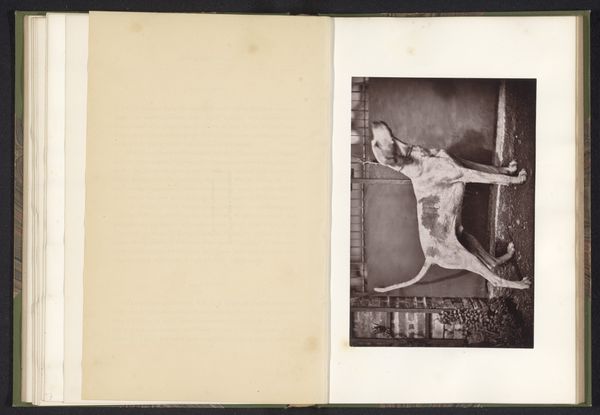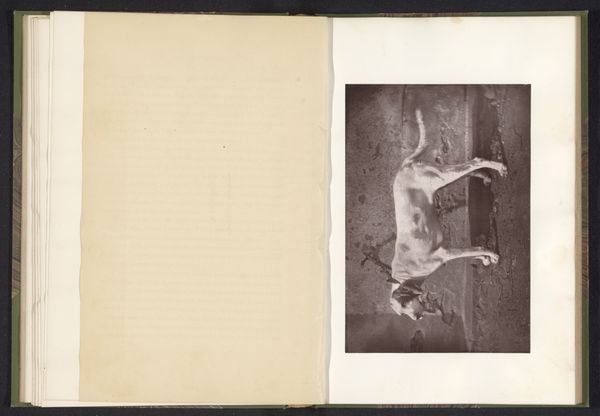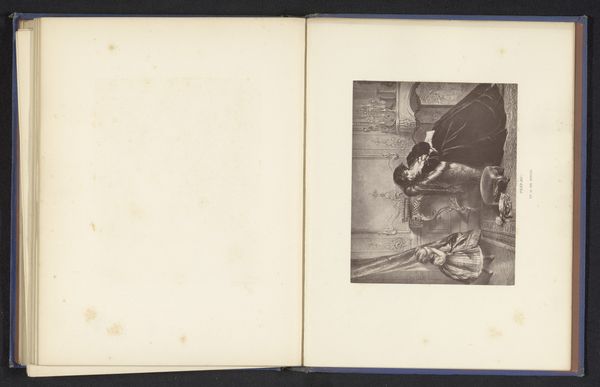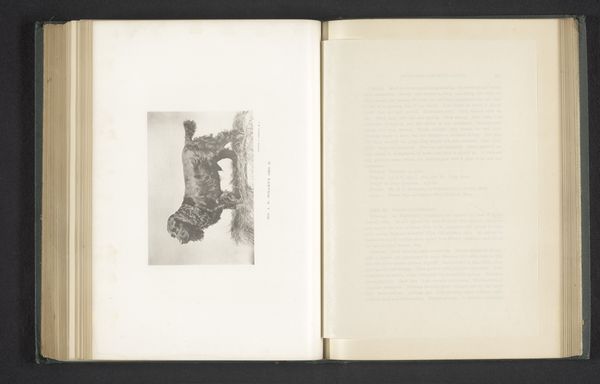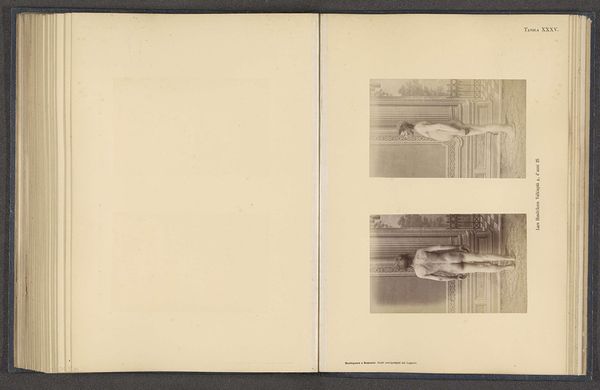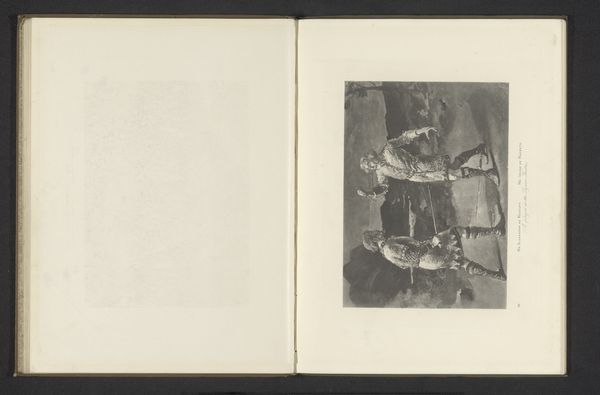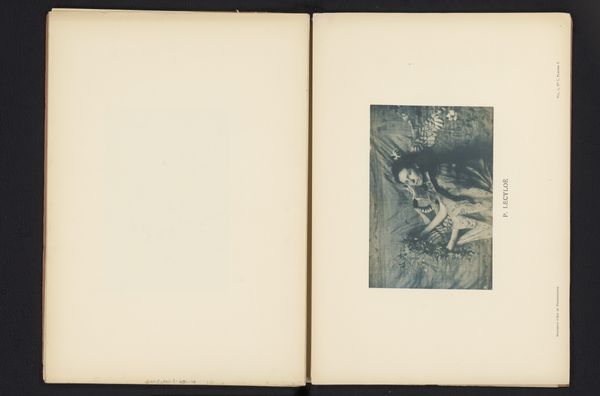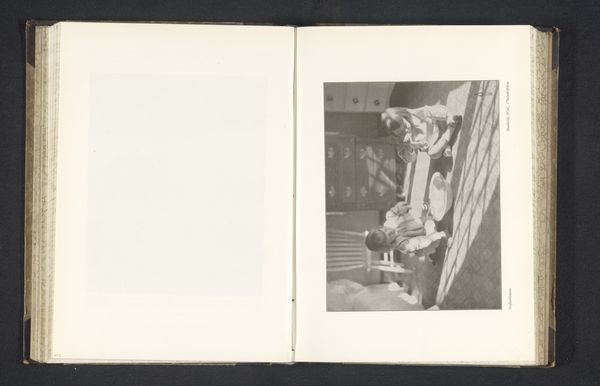
photography, gelatin-silver-print
#
photography
#
gelatin-silver-print
#
watercolor
#
realism
Dimensions: height 132 mm, width 195 mm
Copyright: Rijks Museum: Open Domain
Curator: Immediately striking, isn’t it? The way the dog is presented almost formally… yet also somewhat vulnerably. Editor: Indeed. Before us is "Jachthond," which translates to "Hunting Dog," a gelatin-silver print photographic work by Léon Crémière, created at some point before 1879. It captures a moment that speaks volumes about animal representation and the socio-cultural role of dogs at that time. Curator: And I think that formal posture tells us so much about class and labour and even colonialism; thinking about who hunts, why, and how those distinctions affected how dogs were viewed and used in society. There’s a history of violence and hierarchy in the seemingly innocent portrayal of a "pet" or "companion". Editor: I agree that class plays a role in this imagery. The choice of gelatin-silver print also deserves consideration, as it allowed for mass production and dissemination. It aided in visually codifying perceptions of animals, especially their "utility" or "purpose" in the late 19th century. Curator: That ties into the political representation of animals – how animals as allegories serve to promote ideologies; here the image also serves to uphold existing social order. This image then speaks not just about this one dog, but the construction and control of nature more broadly. Editor: Consider the staging: the stark background of a brick wall juxtaposed with the dog's somewhat ungainly stance… Is the dog performing? For whom? This image contributes to the broader archive of how domesticated animals were exhibited, traded, and perceived—all aspects intertwined with shifting values and beliefs. Curator: This really reframes what might be read, at first glance, as a relatively simple animal portrait, inviting an expanded critical engagement with art’s potential to serve particular interests, but also art's reflection of them. Editor: Indeed, thinking about Cremiere's context forces us to see this as more than just a depiction of a dog, but instead, a portrait embedded in complex social structures. Curator: Absolutely; it shifts from being "just an image" to an artifact worthy of decoding. Editor: A photograph pregnant with unspoken cultural and historical significance, revealed through considered observation and nuanced analysis.
Comments
No comments
Be the first to comment and join the conversation on the ultimate creative platform.
